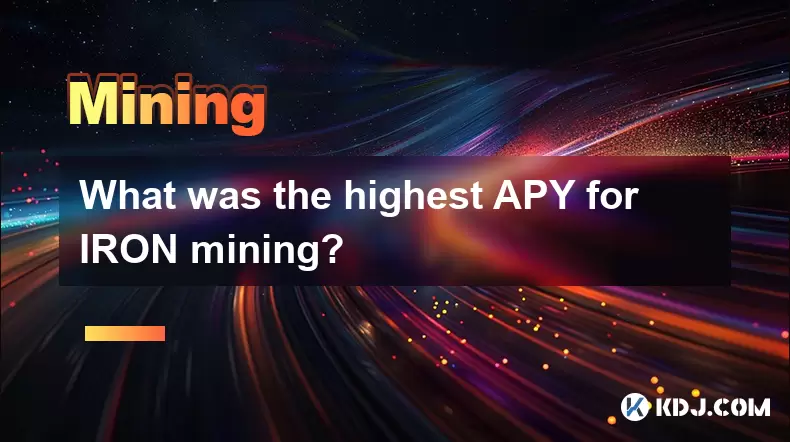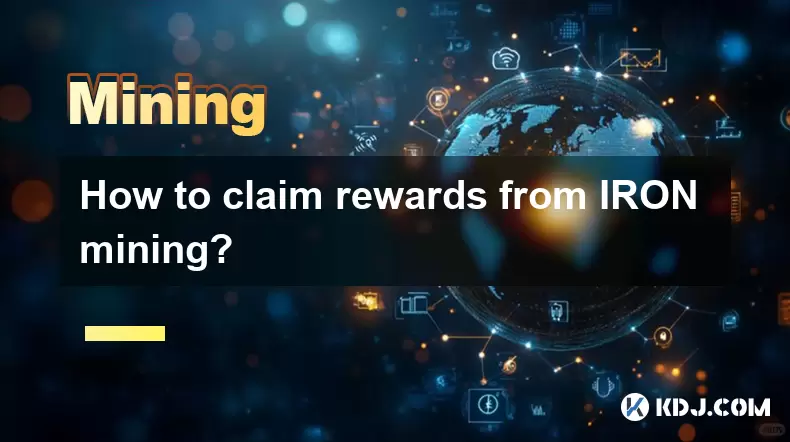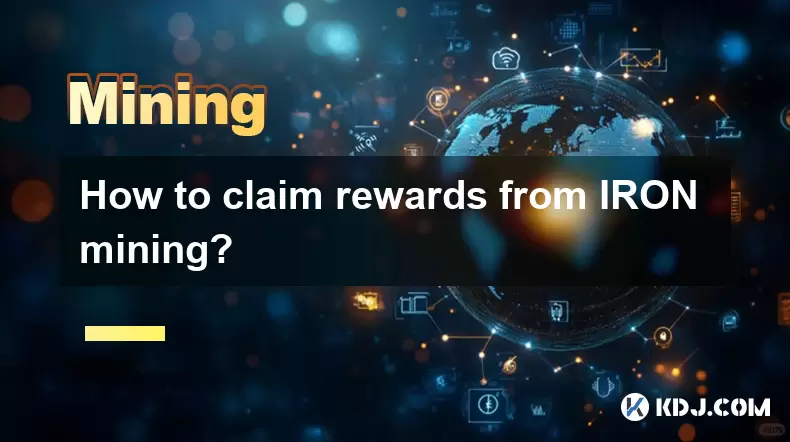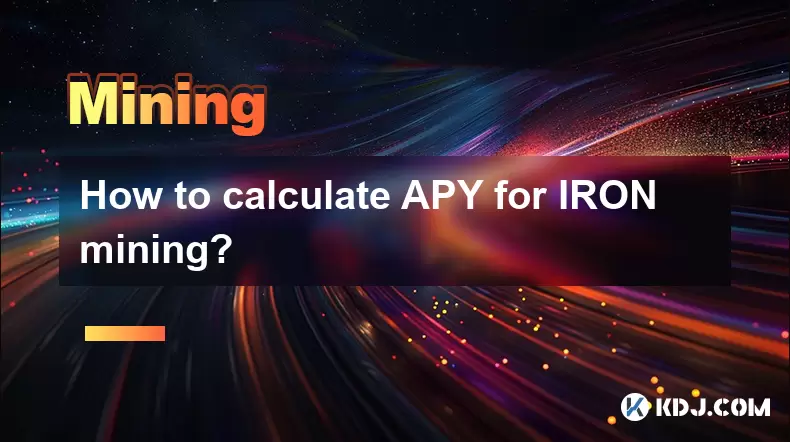-
 Bitcoin
Bitcoin $115000
0.12% -
 Ethereum
Ethereum $3701
4.50% -
 XRP
XRP $3.081
2.99% -
 Tether USDt
Tether USDt $0.0000
-0.01% -
 BNB
BNB $767.9
1.45% -
 Solana
Solana $169.5
3.13% -
 USDC
USDC $0.9999
0.01% -
 Dogecoin
Dogecoin $0.2106
4.30% -
 TRON
TRON $0.3334
1.62% -
 Cardano
Cardano $0.7564
2.54% -
 Stellar
Stellar $0.4165
0.76% -
 Hyperliquid
Hyperliquid $38.75
0.25% -
 Sui
Sui $3.593
3.00% -
 Chainlink
Chainlink $17.08
3.59% -
 Bitcoin Cash
Bitcoin Cash $573.6
4.35% -
 Hedera
Hedera $0.2508
-0.84% -
 Avalanche
Avalanche $23.07
6.46% -
 Ethena USDe
Ethena USDe $1.001
-0.02% -
 Litecoin
Litecoin $120.8
8.17% -
 UNUS SED LEO
UNUS SED LEO $8.943
-0.32% -
 Toncoin
Toncoin $3.400
-5.60% -
 Shiba Inu
Shiba Inu $0.00001255
1.54% -
 Uniswap
Uniswap $9.908
6.32% -
 Polkadot
Polkadot $3.718
2.10% -
 Monero
Monero $303.0
-0.74% -
 Dai
Dai $0.9999
-0.02% -
 Bitget Token
Bitget Token $4.392
0.91% -
 Cronos
Cronos $0.1403
6.31% -
 Pepe
Pepe $0.00001076
1.13% -
 Aave
Aave $267.2
1.80%
What is the mortgage mechanism for Filecoin mining?
Filecoin mining uses a cryptographic "mortgage" of FIL tokens as collateral, not traditional real estate. The amount pledged dictates storage capacity and reward potential, with penalties for failing storage obligations.
Mar 20, 2025 at 02:57 pm

Key Points:
- Filecoin's mining, or storage mining, isn't directly tied to traditional mortgage mechanisms. Instead, it relies on a pledge of FIL tokens as collateral.
- The amount of FIL pledged impacts a miner's storage capacity and reward potential.
- Network participation requires a significant upfront investment and ongoing operational costs.
- Miner rewards are earned through providing storage and retrieval services, and are influenced by factors like sector size and network demand.
- Penalties exist for faulty storage or dishonest behavior, resulting in FIL token loss.
What is the mortgage mechanism for Filecoin mining?
Unlike traditional mortgages involving real estate, Filecoin's "mortgage" is a cryptographic mechanism ensuring the integrity and reliability of its decentralized storage network. It doesn't involve physical property but rather a pledge of Filecoin (FIL) tokens. Miners must lock up a substantial amount of FIL as collateral to participate in the network. This collateral serves as a guarantee to the network that they will fulfill their storage obligations. The more FIL a miner pledges, the more storage capacity they can provide and the higher their potential rewards. This system incentivizes honest behavior and discourages malicious actors from compromising the network's integrity.
How much FIL do I need to start mining?
The amount of FIL required to start mining Filecoin varies significantly. It depends on factors such as the desired storage capacity, hardware specifications, and the prevailing network conditions. Starting with a small amount is not feasible; substantial investment is necessary for a competitive operation. You'll need to factor in the cost of hardware (storage drives, servers, networking equipment), electricity, and the initial FIL pledge. Consult the official Filecoin documentation and community resources for the most up-to-date information.
What happens to my pledged FIL?
The pledged FIL tokens are locked within the Filecoin protocol. They are not frozen in the traditional sense, but they are inaccessible to the miner until certain conditions are met. The tokens act as collateral against the miner's storage obligations. If a miner fails to meet their storage commitments, or engages in malicious behavior, a portion or all of their pledged FIL may be slashed. This mechanism ensures network stability and penalizes bad actors. The amount of FIL pledged is directly proportional to the storage capacity allocated, creating an incentive for responsible operation.
How are Filecoin mining rewards calculated?
Filecoin miners earn rewards through a combination of factors. The primary reward mechanism is based on providing storage and retrieval services to clients who store data on the network. The more storage a miner provides and the more frequently their data is accessed, the more rewards they earn. The size of the sectors (chunks of storage) also influences rewards. Furthermore, the network's overall demand for storage influences the reward distribution. Successful and consistent performance earns greater rewards, while poor performance can result in penalties.
What are the risks involved in Filecoin mining?
Filecoin mining involves significant risks. The primary risk is the potential loss of pledged FIL due to network penalties. This can occur if a miner fails to maintain their storage commitments, experiences hardware failures, or engages in fraudulent activities. Furthermore, the cryptocurrency market's volatility directly impacts the value of FIL tokens. The price of FIL can fluctuate significantly, impacting the profitability of mining operations. Hardware costs, electricity expenses, and ongoing maintenance add to the operational expenses. These factors should be carefully considered before investing in Filecoin mining.
What are the penalties for failing to meet storage obligations?
The Filecoin protocol employs a sophisticated penalty system to ensure network integrity. If a miner fails to maintain the required storage capacity, or if data is lost due to negligence or malicious intent, the miner faces penalties in the form of slashed FIL tokens. The severity of the penalty depends on the nature and extent of the infraction. Minor infractions may result in partial slashing, while severe violations can lead to the complete loss of the pledged FIL. This system incentivizes miners to prioritize data integrity and operational reliability.
Can I retrieve my pledged FIL?
The pledged FIL tokens are not immediately retrievable. Miners can only unlock their FIL after fulfilling their storage commitments for a specified period and meeting certain network requirements. The process involves gradually unlocking the FIL over time, which is designed to reduce the risk of sudden large-scale withdrawals destabilizing the network. The precise terms and conditions for retrieving pledged FIL are outlined in the Filecoin protocol documentation. Early withdrawal attempts are likely to result in penalties.
What hardware is required for Filecoin mining?
Filecoin mining requires specialized hardware. High-capacity storage drives (HDDs or SSDs) are essential, along with powerful servers capable of handling the storage and retrieval demands. Efficient networking equipment is also crucial for reliable connectivity to the Filecoin network. The exact hardware specifications will depend on the desired storage capacity and the miner's operational goals. It's recommended to research the latest recommendations from the Filecoin community and hardware providers to ensure optimal performance and efficiency. The cost of hardware is a significant upfront investment.
How does Filecoin's mortgage mechanism compare to other cryptocurrencies?
Unlike many cryptocurrencies that rely on proof-of-work or proof-of-stake consensus mechanisms, Filecoin employs a unique proof-of-replication and proof-of-spacetime consensus. This requires miners to pledge FIL as collateral, creating a direct link between storage capacity and token holdings. This contrasts with other systems where token holdings might primarily influence voting power or block creation. The collateralization in Filecoin ensures data availability and incentivizes reliable storage provision, differentiating it from many other blockchain networks.
What are the long-term prospects of Filecoin mining?
The long-term prospects of Filecoin mining depend on various factors, including the adoption of the Filecoin network, the evolution of the protocol, and the overall cryptocurrency market. Increased demand for decentralized storage could lead to higher FIL prices and increased profitability for miners. However, competition among miners and technological advancements could also impact profitability. Thorough research and careful consideration of the risks are crucial before making any long-term investment decisions in Filecoin mining.
Common Questions and Answers:
Q: Is Filecoin mining profitable?
A: The profitability of Filecoin mining depends on several factors, including the price of FIL, hardware costs, electricity costs, and network demand. It's not guaranteed to be profitable and requires careful analysis of the costs and potential rewards.
Q: What is a sector in Filecoin?
A: A sector is a segment of storage capacity provided by a miner. Miners divide their storage into sectors, each containing a certain amount of data. The size and number of sectors influence a miner's rewards.
Q: How does Filecoin prevent malicious actors?
A: Filecoin uses a multi-faceted approach, including the pledge of FIL as collateral, cryptographic proofs, and a penalty system for data loss or misconduct, to deter malicious behavior and ensure network integrity.
Q: What is the difference between a Filecoin miner and a Filecoin client?
A: A Filecoin miner provides storage space on the network and receives rewards for doing so. A Filecoin client is an entity that stores data on the Filecoin network and pays miners for their services.
Disclaimer:info@kdj.com
The information provided is not trading advice. kdj.com does not assume any responsibility for any investments made based on the information provided in this article. Cryptocurrencies are highly volatile and it is highly recommended that you invest with caution after thorough research!
If you believe that the content used on this website infringes your copyright, please contact us immediately (info@kdj.com) and we will delete it promptly.
- Velo Universe, DEX, and DeFi Security: Navigating the Future of Decentralized Trading
- 2025-08-05 09:25:13
- Bitget Wallet Revolutionizes Solana with Gas-Free Transactions: A New Era for DeFi
- 2025-08-05 09:25:13
- Ozak AI, Crypto Boom, and ROI Potential: Is This the Next Big Thing?
- 2025-08-05 09:25:24
- Solana's ETF Hopes & the All-Time High Chase: Is SOL Set to Soar?
- 2025-08-05 09:25:24
- Coinbase's Brian Armstrong and the Art of Focused Work: A Deep Dive
- 2025-08-05 09:25:30
- Uniswap Price Prediction: Bullish Reversal on the Horizon?
- 2025-08-05 09:25:30
Related knowledge

What was the highest APY for IRON mining?
Jul 23,2025 at 05:14am
Understanding IRON Token and Its Mining MechanismThe IRON token is a stablecoin that operates within the Iron Finance ecosystem, primarily on blockcha...

What is impermanent loss in IRON pools?
Jul 23,2025 at 09:00am
Understanding Impermanent Loss in the Context of IRON PoolsImpermanent loss is a phenomenon that affects liquidity providers in decentralized finance ...

How to claim rewards from IRON mining?
Jul 23,2025 at 02:21pm
Understanding IRON Mining and Reward MechanismsIRON Finance operated as a decentralized finance (DeFi) protocol on the Polygon and Binance Smart Chain...

How to claim rewards from IRON mining?
Jul 29,2025 at 05:07am
Understanding IRON Mining and Reward MechanismIRON is a dual-token system designed to stabilize the value of a synthetic asset through a combination o...

IRON mining tutorial for beginners
Jul 27,2025 at 12:01am
What Is IRON and How Does It Work in the Cryptocurrency Ecosystem?IRON is a cryptocurrency token that operates on the Binance Smart Chain (BSC) and is...

How to calculate APY for IRON mining?
Jul 28,2025 at 09:49am
Understanding APY in the Context of IRON Token MiningWhen engaging in IRON token mining within decentralized finance (DeFi) platforms, Annual Percenta...

What was the highest APY for IRON mining?
Jul 23,2025 at 05:14am
Understanding IRON Token and Its Mining MechanismThe IRON token is a stablecoin that operates within the Iron Finance ecosystem, primarily on blockcha...

What is impermanent loss in IRON pools?
Jul 23,2025 at 09:00am
Understanding Impermanent Loss in the Context of IRON PoolsImpermanent loss is a phenomenon that affects liquidity providers in decentralized finance ...

How to claim rewards from IRON mining?
Jul 23,2025 at 02:21pm
Understanding IRON Mining and Reward MechanismsIRON Finance operated as a decentralized finance (DeFi) protocol on the Polygon and Binance Smart Chain...

How to claim rewards from IRON mining?
Jul 29,2025 at 05:07am
Understanding IRON Mining and Reward MechanismIRON is a dual-token system designed to stabilize the value of a synthetic asset through a combination o...

IRON mining tutorial for beginners
Jul 27,2025 at 12:01am
What Is IRON and How Does It Work in the Cryptocurrency Ecosystem?IRON is a cryptocurrency token that operates on the Binance Smart Chain (BSC) and is...

How to calculate APY for IRON mining?
Jul 28,2025 at 09:49am
Understanding APY in the Context of IRON Token MiningWhen engaging in IRON token mining within decentralized finance (DeFi) platforms, Annual Percenta...
See all articles

























































































